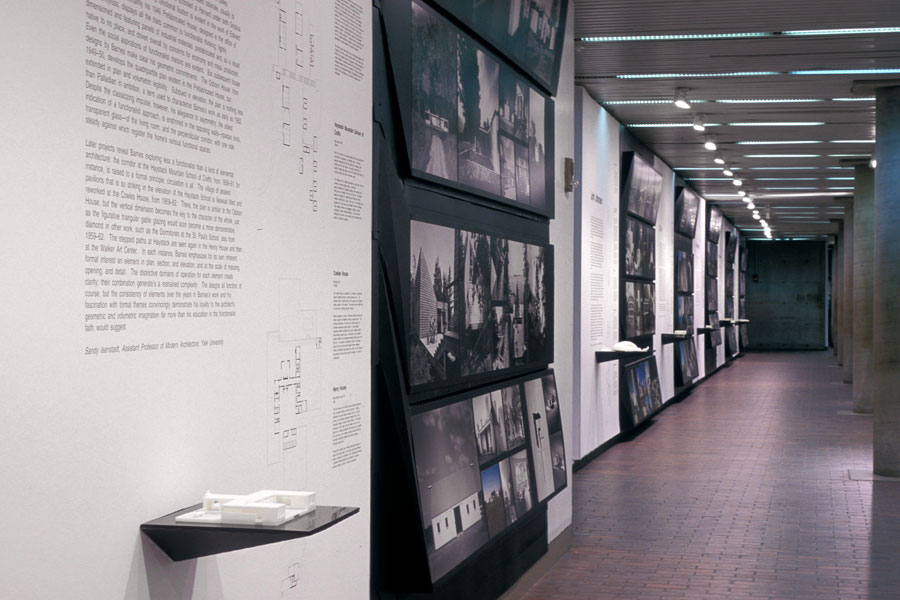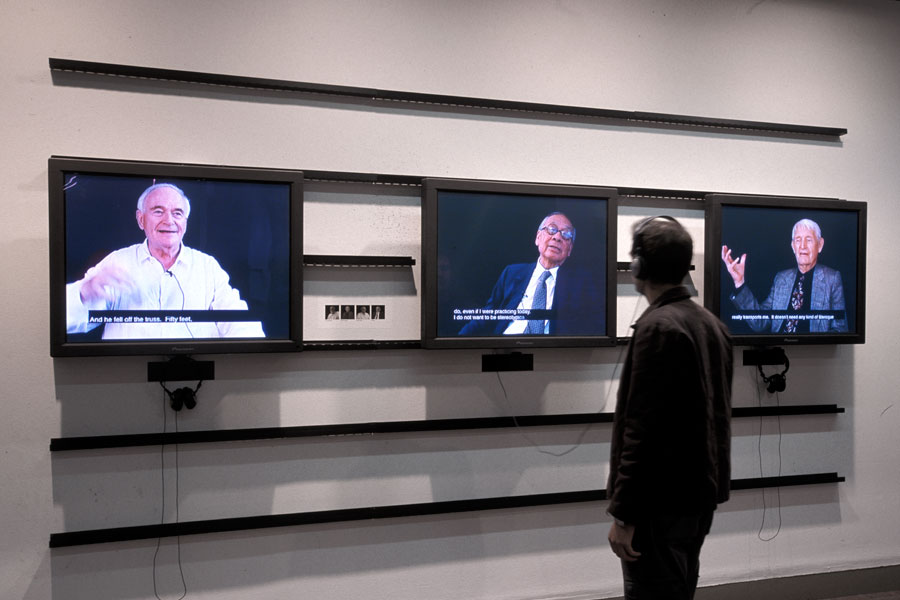Beyond The Harvard Box
The Early Works of Edward L. Barnes, Ulrich Franzen, John Johansen, Victor Lundy, I.M. Pei, and Paul Rudolph
October 5, 2006–November 15, 2006
Michael Meredith, curator
Beyond the Harvard Box focuses on the early work of six architects who graduated from the Harvard University Graduate School of Design architecture program during the 1940s. This generation of students studied under Walter Gropius, Marcel Breuer and other significant figures in the early pedagogy of modernism in the United States. All of the architects in this exhibition—Edward L. Barnes, John Johansen, I.M. Pei, Ulrich Franzen, Paul Rudolph and Victor Lundy—have had successful, unique and influential careers, forging alternate architectural trajectories of the postwar period. All of their work presented was completed during the 50s and 60s, a time when these architects were establishing their practices, and before they were lumped together as “late-modernists,” before the Vietnam War escalated, before Robert Venturi happened, before the simultaneously liberating and oppressive confusion of “post-modernism”.
Their work from the 1950s and 1960s is presented here alongside material describing the pedagogy at the GSD during the 1940s. At the GSD, our relationship with our institutional past has remained under the surface and through this exhibition we are confronted with fundamental questions concerning the relationship between the individual and institution, pedagogy and practice, leaving us to ponder how so many successful, well-respected and, ultimately, distinct architects all graduated from the same institution around the same time. Examining the student roster, it appears that there has never been a more fertile moment at any architecture school before or since.
Within architectural discourse, this period at the GSD is seen as either infamous or important. The exhibition title refers specifically to the pejorative and descriptive term, “Harvard Box,” which was coined to describe the Gropius-inspired, stripped down functionalist aesthetic. These architects have been grouped together before, in the early 1980s, the architects in this exhibition were labeled as the “Harvard Box” architects in Klaus Herdeg’s book, The Decorated Diagram. Within Herdeg’s influential book, many of the projects displayed here were considered to be evidence of the failure of modernism and Bauhaus influenced pedagogy. Eventually, this work was displaced outside of academic discourse (including the education of recent and present GSD students, myself included), elided by simple narratives of modernism and the paradigms of historical post-modernism.
This exhibition challenges the fundamental conception of the so-called “Harvard Box” architects. Through simply exhibiting and looking at their work, it is obvious that this architecture is not coherent enough to be grouped under any singular paradigm. If there is one thing these architects have in common, it is that all were known for their distinctive formal inventions, their skillful combinations of pragmatism and experimentation with figurative geometric shapes, innovative structures and a deep interest in materials and surfaces; in other words, their willingness to escape the “box.” Through a contemporary lens, we are able to appreciate the outlines of yet another alternative modernism, as well as establish reference for many current interests in architecture.
Presently, as the discipline has moved beyond a self-consciously defined architectural moment, where confusion and anxiety have become academic, we as students and architects can see the design mandate of this work as instructive and the projects as remarkably prescient. Of course, we no longer talk about “spirit.” Instead, we talk about “appropriateness,” “performance,” “intent,” or “desire.” So, if the modernist social directive of pragmatic functionalism—that seductively reductive endgame of architecture—gave way to artistry, figuration, signification and expression, the problem for us all is the same as it was then: how to use the architectural problems of function, context, typology, history, and mine pragmatic technique to solve concrete problems and produce progressive and responsible buildings. These projects by our architectural predecessors occupy an important and complex moment in our history. The exhibition, with its emphasis on pedagogy of the Harvard Graduate School of Design as it is being presented within the same school, is highly self-conscious. Hopefully it will also be instructive, representing a diverse body of design research and innovative, good architecture that I believe is useful to re-examine today as practicing architects and architecture students dealing with similarly complicated questions within our own undefined moment. And at least to me, it appears new again.
Michael Meredith, Assistant Professor of Architecture
RELATED MEDIA
Gund Hall Gallery

